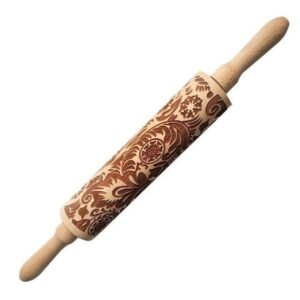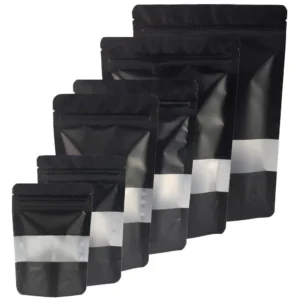Introduction
Chow mein noodles are not just any ordinary noodle dish; they are a culinary adventure that can be enjoyed as a main course or a delightful side dish. Whether made with fried noodles, rice noodles, spaghetti noodles, or even ramen noodles, chow mein never fails to captivate taste buds with its delectable blend of ingredients and seasonings. From the tender egg noodles to the vibrant assortment of vegetables and succulent meats or seafood, each bite offers a symphony of tastes that will leave you craving more.
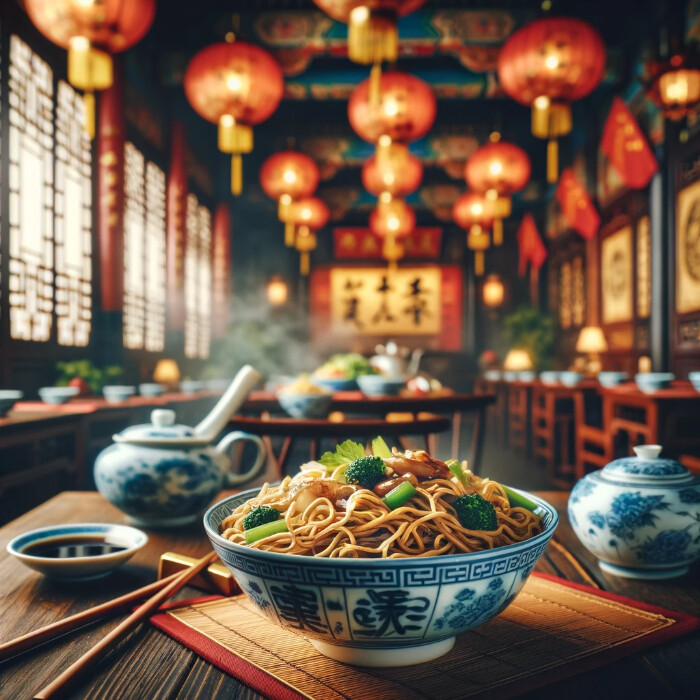
Characteristics of Chow Mein Noodles
Typically Made with Wheat-Based Noodles
Chow mein noodles are typically made with wheat-based noodles that are stir-fried until crispy. These noodles have a distinct texture that sets them apart from other types of noodles. The process of stir-frying gives the noodles a unique flavor and adds to their overall appeal.
Versatile Pairings with Proteins and Vegetables
One of the great things about chow mein noodles is their versatility. They can be paired with a wide variety of proteins and vegetables, allowing you to create endless combinations and flavors. Whether you prefer chicken, beef, shrimp, or tofu, there’s a chow mein noodle dish that will satisfy your cravings.
Satisfying Chewy Texture with Crunchiness
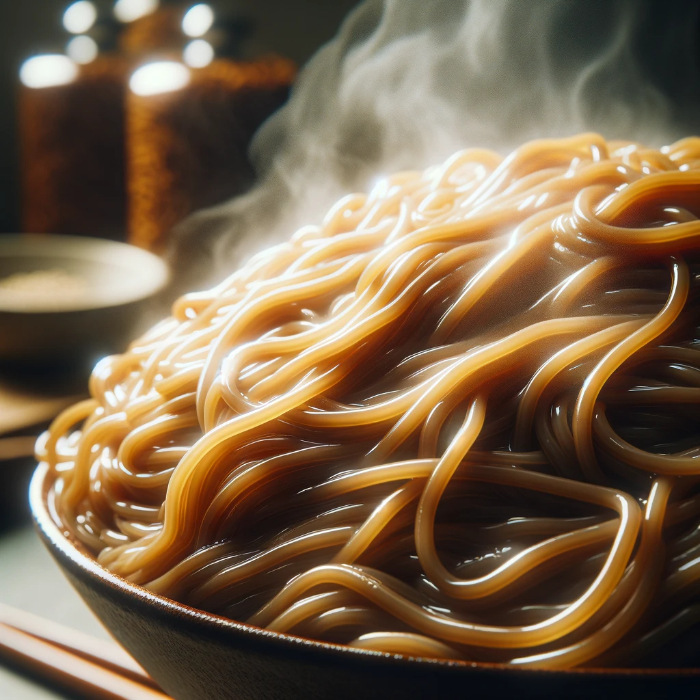
Chow mein noodles offer a satisfying chewy texture combined with the crunchiness that comes from being stir-fried. This combination of textures creates an enjoyable eating experience that keeps you coming back for more. Each bite is filled with layers of flavor and different mouthfeel sensations.
Excellent Absorption of Flavors
Another characteristic of chow mein noodles is their ability to absorb flavors well. When cooked in savory sauces and seasonings, these noodles soak up the flavors, resulting in a deliciously seasoned dish. This makes them perfect for creating flavorful stir-fries or noodle bowls.
Exploring Chow Mein Noodles: Types and Freezing Tips
Chow mein noodles are a popular type of Chinese noodle dish that can be enjoyed in a variety of ways. There are several different types of chow mein noodles, each with its own unique characteristics. Some common types include thin egg noodles, wheat noodles, and rice noodles. Thin egg noodles are often used in stir-fried chow mein dishes, while wheat noodles are typically used in soup-based chow mein dishes. rice noodles, on the other hand, are commonly used in vegetarian or gluten-free chow mein dishes.
When it comes to freezing chow mein noodles, there are a few tips to keep in mind. First, it’s important to cook the noodles al dente before freezing them. This will help prevent them from becoming too soft or mushy when they are thawed and reheated. Once the noodles are cooked, allow them to cool completely before transferring them to a freezer-safe container or bag. It’s also a good idea to portion out the noodles into individual servings before freezing, so you can easily thaw and reheat only what you need. When you’re ready to enjoy the frozen chow mein noodles, simply thaw them in the refrigerator overnight and then reheat them in a skillet or microwave until heated through.
Popular Variations of Chicken Chow Mein

Chicken chow mein is a beloved dish that combines tender chicken, fresh vegetables, and delicious noodles. But did you know that there are different styles of chicken chow mein? Let’s explore some popular variations!
Classic Chicken Chow Mein
The classic version of chicken chow mein is a crowd-pleaser. It features succulent pieces of chicken stir-fried with an assortment of colorful vegetables and tossed with noodles. This style is known for its well-balanced flavors and satisfying textures.
Spicy Szechuan-Style Chicken Chow Mein
If you’re a fan of spicy food, the Szechuan-style chicken chow mein will be right up your alley. This variation adds a fiery kick to the dish by incorporating chili peppers and Szechuan peppercorns. Brace yourself for an explosion of bold flavors that will awaken your taste buds!
Cantonese-Style Chicken Chow Mein
For those who prefer a lighter sauce, the Cantonese-style chicken chow mein is a perfect choice. The sauce in this version is made from a combination of soy sauce, oyster sauce, and broth. It results in a savory yet delicate flavor profile that complements the tender chicken and crunchy vegetables.
Hong Kong-Style Chicken Chow Mein
Hong Kong-style chicken chow mein offers a unique twist on the traditional dish. In this variation, thinner noodles are used as the base, creating a lighter texture overall. What sets it apart is the addition of crispy fried egg noodles on top, providing an extra layer of crunchiness to every bite.
Key Ingredients for Chicken Chow Mein
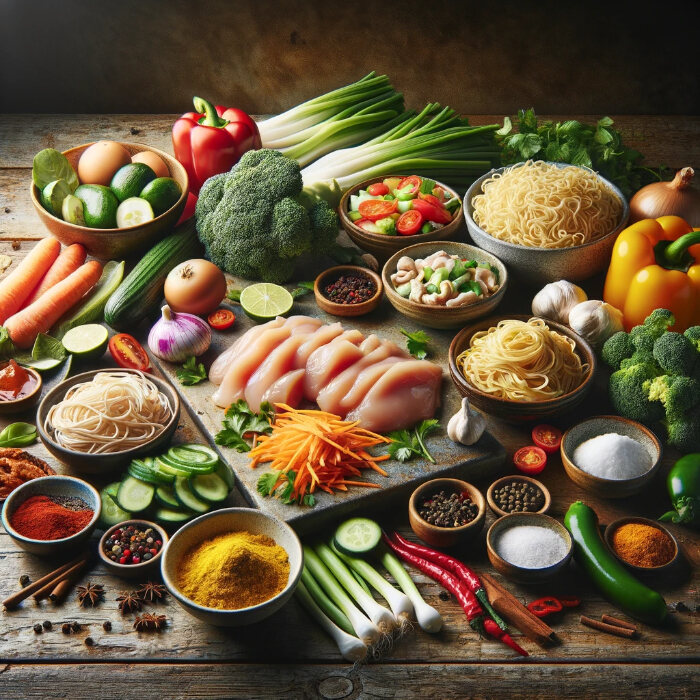
Chicken Chow Mein is a delicious and popular dish that combines tender chicken, crunchy vegetables, and flavorful sauce. To create this savory dish, you’ll need a few key ingredients that come together to make it absolutely scrumptious.
Chicken breast or thigh meat provides protein and flavor to the dish.
You have a couple of options: chicken breast or thigh meat. Both cuts are commonly used in this recipe as they offer different textures and flavors. Chicken breast is leaner and has a milder taste, while thigh meat is juicier and adds richness to the dish. Choose whichever cut suits your preferences best!
Common vegetables used include bell peppers, carrots, onions, and bean sprouts for added crunchiness.
To add color, texture, and nutritional value to your Chicken Chow Mein, you’ll want to include an assortment of vegetables. Bell peppers bring a vibrant touch with their sweet crunchiness. Carrots provide both color and a slight sweetness. Onions add depth of flavor when sautéed alongside the other ingredients. Lastly, bean sprouts contribute an extra layer of crunchiness that complements the noodles perfectly.
Soy sauce, oyster sauce, sesame oil, garlic, ginger, and cornstarch form the base of the flavorful sauce.
The sauce is what brings all the flavors together in Chicken Chow Mein. A combination of soy sauce and oyster sauce provides a savory umami taste that enhances every bite. Sesame oil adds its distinct nutty aroma while garlic and ginger provide aromatic notes that elevate the dish’s overall taste profile. Cornstarch acts as a thickening agent for the sauce so it coats each ingredient evenly.
Chow mein noodles are essential for this dish’s foundation.
Of course, we can’t forget about the star ingredient – chow mein noodles! These wheat-based noodles are the foundation of Chicken Chow Mein. They have a slightly chewy texture that complements the other ingredients perfectly. You can find chow mein noodles in most grocery stores or Asian markets, usually in the international aisle.
Tips for Perfectly Cooked Chow Mein Noodles
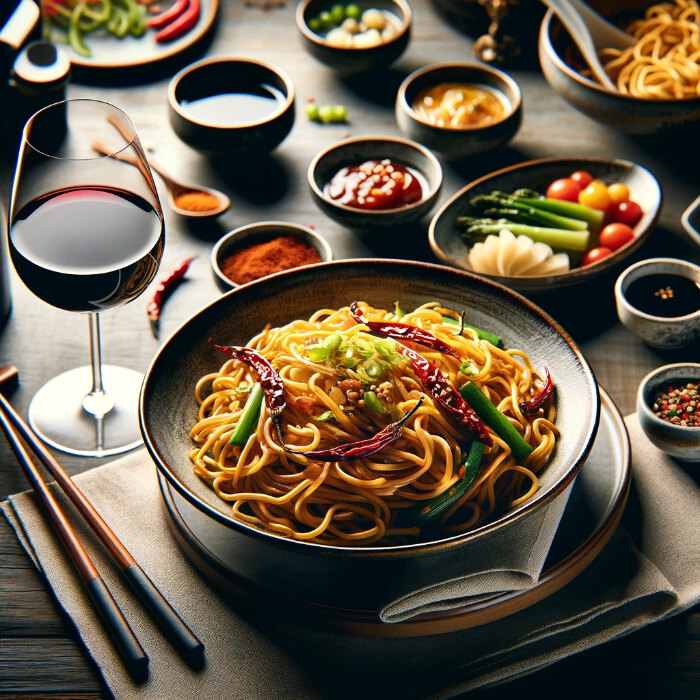
To achieve the best chow mein noodles, there are a few key tips you should keep in mind. Follow these guidelines to ensure your noodles turn out perfectly cooked every time.
Boil the noodles until al dente
Before stir-frying, it’s essential to boil the chow mein noodles until they reach an “al dente” texture. This means they should be cooked through but still have a slight firmness to them. By doing this, you prevent the noodles from becoming mushy during the subsequent cooking process.
Rinse cooked noodles under cold water
Once your noodles are boiled and drained, give them a quick rinse under cold water. This step helps remove any excess starch that may cause the noodles to stick together when stir-fried. Rinsing also cools down the noodles and stops them from overcooking.
Stir-fry on high heat quickly
When it’s time to stir-fry your chow mein, crank up the heat! High heat ensures that your noodles cook evenly while maintaining their desired texture. The quick cooking process helps retain their chewiness without turning them soggy or limp.
Toss the noodles gently
While stir-frying, remember to toss the chow mein noodles gently in the wok or pan. Vigorous stirring can lead to breakage or clumping of the strands. Aim for a light touch and use utensils like tongs or chopsticks to delicately move and separate the noodles as needed.
Serving Suggestions and Pairings for Chow Mein
To truly enjoy your chow mein noodles, it’s important to consider the perfect accompaniments and serving suggestions. Here are some ideas to enhance your dining experience:
Serve with Steamed Rice for a Complete Meal
When serving chicken chow mein, consider pairing it with a side of steamed rice. The combination of flavorful noodles and fluffy rice creates a satisfying and filling meal. The soft texture of the rice complements the chewiness of the noodles, providing a delightful contrast.
Add Crispy Spring Rolls or Dumplings for an Appetizing Feast
For those looking to create an authentic Chinese feast, crispy spring rolls or dumplings make excellent additions to your chow mein dish. These crunchy appetizers not only add texture but also offer additional flavors that complement the savory taste of the noodles.
Accompany with Fresh Salad or Pickled Vegetables
To balance out the richness of chow mein, consider adding a fresh salad or pickled vegetables as refreshing accompaniments. The crispness and tanginess of these sides provide a burst of freshness that cuts through the richness of the dish, creating a harmonious balance.
Enjoy with Hot Tea or Iced Green Tea
To complete your dining experience, pair your chow mein with hot tea or iced green tea. The warmth of hot tea enhances the flavors while providing a soothing effect on your palate. On warmer days, opt for iced green tea for a refreshing and cooling sensation.
Choosing the Perfect Noodles for Homemade Chow Mein
When it comes to making homemade Chow Mein, choosing the right noodles is essential for achieving the perfect texture and taste. Here are some tips to help you select the best noodles for your dish:
1. Egg Noodles: These are the most common type of noodles used in Chow Mein. They have a slightly chewy texture and a yellow color, which adds visual appeal to the dish.
2. Lo Mein Noodles: These noodles are similar to egg noodles but are thicker and have a softer texture. They absorb flavors well and are great for creating a saucier Chow Mein.
3. Rice Noodles: If you prefer a gluten-free option or a lighter noodle, rice noodles are a good choice. They have a delicate texture and are often used in stir-fried dishes.
4. Udon Noodles: These thick, wheat-based noodles are commonly used in Japanese cuisine but can also be used in Chow Mein. They have a chewy texture and can hold up well to stir-frying.
5. Soba Noodles: Made from buckwheat flour, soba noodles have a nutty flavor and a slightly chewy texture. They are a healthier alternative and can add a unique twist to your Chow Mein.
Conclusion
So go ahead, grab those chopsticks, and let your creativity soar in the kitchen. Whether you prefer a classic chicken chow mein or want to venture into uncharted territory with unique combinations, remember that cooking is an art form where you can express yourself. Embrace the joy of culinary exploration, and don’t be afraid to add your personal touch to every dish you create. With each bite, savor the harmonious blend of textures and flavors that make chow mein noodles such a beloved dish around the world.
FAQs
Can I use other types of noodles for chow mein?
Absolutely! While traditional chow mein calls for wheat-based egg noodles, feel free to experiment with other noodle varieties like rice noodles or even spaghetti if you’re feeling adventurous. Just keep in mind that different types of noodles may require adjustments in cooking time and techniques.
How long can I store leftover chow mein?
Leftover chow mein can be stored in an airtight container in the refrigerator for up to 3 days. When reheating, add a splash of water or broth to prevent the noodles from drying out.
Can I make vegetarian or vegan chow mein?
Definitely! Simply substitute meat with tofu or tempeh for a vegetarian version, or use plant-based protein alternatives for a vegan twist. Make sure to adjust seasoning accordingly and experiment with different vegetables for a vibrant and satisfying dish.
Can I freeze chow mein noodles?
While it’s not recommended to freeze cooked chow mein noodles, you can freeze uncooked fresh noodles. Portion them into individual servings, seal them tightly in freezer bags, and store for up to 3 months. When ready to use, cook the frozen noodles directly in boiling water until they float to the surface.
How spicy can I make my chow mein?
The level of spiciness in your chow mein is entirely up to you! Adjust the amount of chili sauce or other spicy ingredients according to your personal preference. Remember to start with small amounts and gradually add more if desired, as it’s easier to increase the heat than tone it down.
Frequently Linked Pages
1. Chow Mein Recipe – Chow Mein Recipe: Quick & Easy Chicken Delight!
2. Chow Mein vs Lo Mein – Chow Mein vs Lo Mein: Decoding the Differences in Chinese Noodle Delights
3. Chow Mein – Chow Mein: A Flavorful Exploration of the Classic Chinese Stir-Fried Noodles




